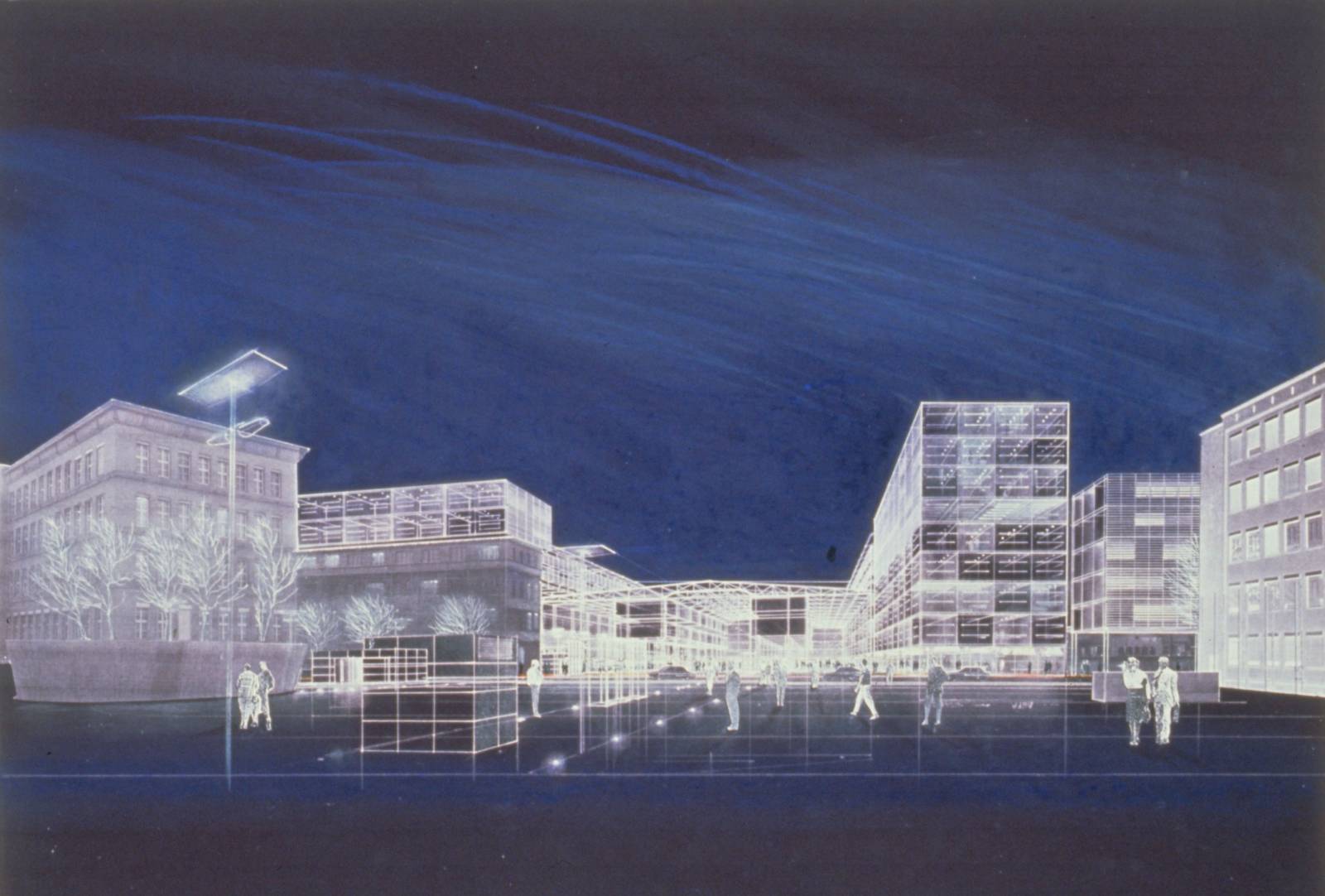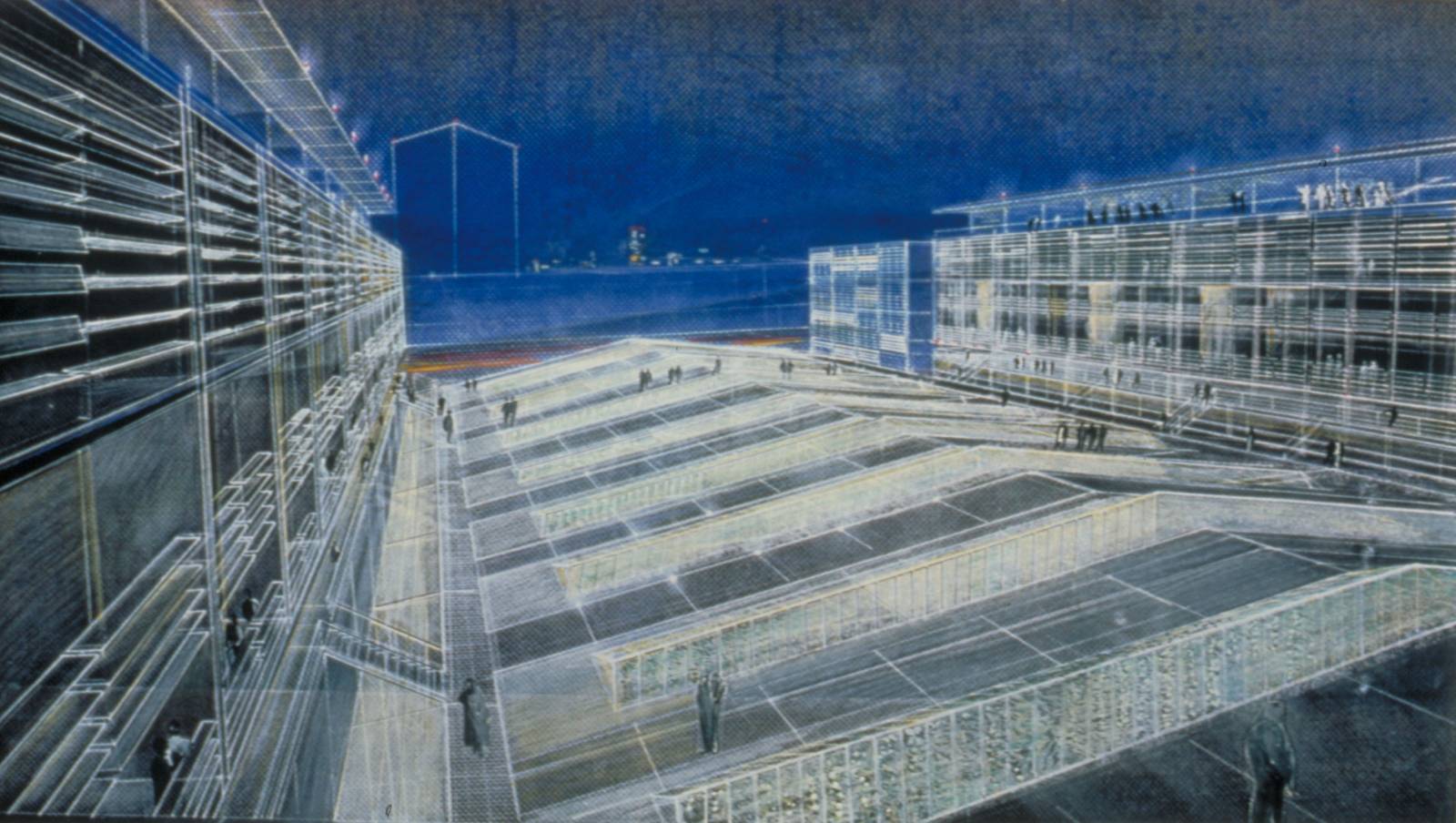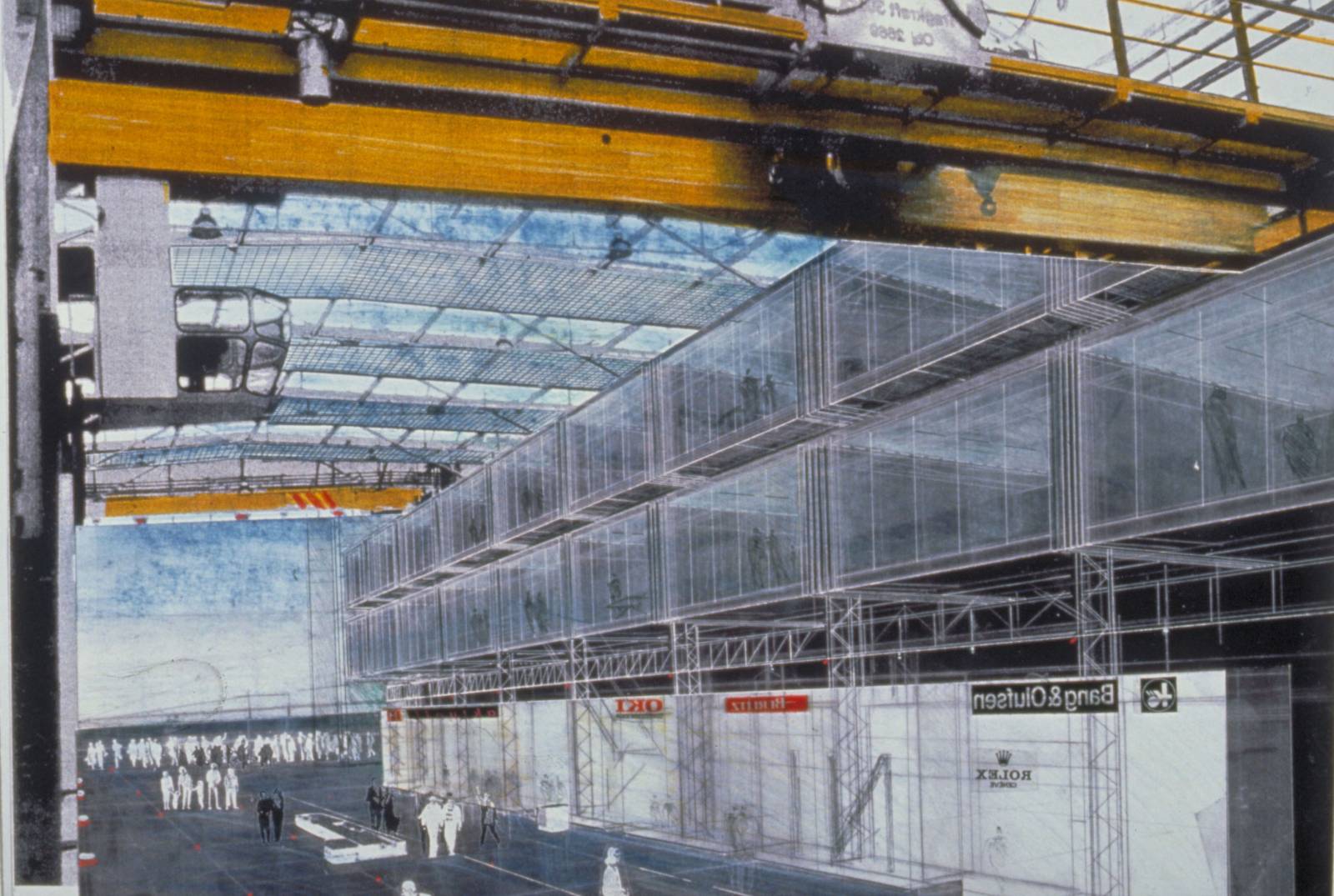Regeneration of the ‘Sulzer-Areal’ industrial wasteland
- Winterthur, Switzerland
Doing architecture in a built landscape
How hard it is for us to design, in the abstract, city precincts that will only become a reality, progressively, in ten, fifteen or twenty years time! All attempts at this for the last thirty to forty years have been failures, or only part-successes…
Over time economic and political factors get the better of even the cleverest plans and the most adaptable purposes. With a few exceptions – official spaces, prestigious public areas – city precincts can’t be pre-designed: they evolve bit by bit, building after building, halfway between the random and the routine. Urban planning is reduced to projecting transport systems, road networks and density levels: new precincts, new towns are leaps in the dark. They can crop up so suddenly. Cities evolve from what already exists, the way a book is written by following on from the previous sentence. It’s a process of concretion-creation. Of stratification. Once a place becomes steeped in history (or histories), once it has built up living time, human time, memory, over a particular terrain, it’s ripe for change, for positive development. Cities now evolve by material conversion, the gradual build-up of time, by iteration or alteration. Sometimes by revelation, revelation of hidden beauty already there…
Our precinct hasn’t escaped this process and the assessment we’ve done of the site’s industrial buildings speaks volumes: a lot of these buildings have real grandeur and the stark simplicity of structures that were made to be useful.
So it’s not a matter of rehabilitation here – we don’t want just to ramp up the nobility of workplaces… The aim is not utilitarian, it’s not about carving up what’s there. No, what I want to do here is use a built site’s assets to create a renaissance, a sense of identity, and equivalence, too … so that, based on its topography, this new precinct has at least as many ‘good points’ as what preceded it. And for that to happen, on a case by case basis, according to programs suggested by the vagaries of history or of an imminent future, I enhance the place with a few insertions, superpositions, superimpositions, substitutions…
Through successive touches, the industrial city metamorphoses, mutates into an urban city, a civilised space. In ways that are complex, new work spaces, retail spaces and living spaces interbreed.
So, obviously, we know what the traps are… obviously, we’ll demolish 30 to 40% of what’s there, obviously all the new buildings we create will be independent of the existing buildings based on a logic of dissociation (superposition, inclusion, ‘clashes’).
This is technically and economically essential to guarantee cost and performance. The existing structures we keep will be in addition, like a landscape. And so an industrial shop floor becomes a covered square, and a department store or vegetable greenhouse becomes the lobby of a residential building.
The relationship between new and old will anchor the place and give it a genius loci we would never get quickly if we razed most of the constructions. This isn’t an ideology of conservation, it’s an ideology of modernity.
How can we forge ahead as fast as possible?
How can we make the best use of our collective memory?
Jean Nouvel





